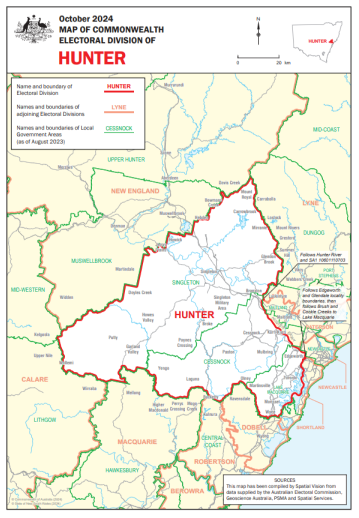|
|
|
|
| Adam Carr's Election Archive
|
Australian federal election, 2025
Division of Hunter, New South Wales
Named for: Hunter River (named in 1797 after Captain John Hunter (1737-1821), Governor of NSW 1795-1800)
Northern New South Wales: Branxton, Cessnock, Kurri Kurri, Singleton, Toronto
Enrolment at 2019 election: 121,560
Enrolment at 2022 election: 128,370 (+05.7)
1999 republic referendum: No 63.2
2018 same-sex marriage survey: Yes 64.4
2023 Voice referendum: No 70.9
2007 Labor majority over Liberal: 15.9%
2010 Labor majority over Liberal: 12.5%
2013 Labor majority over Liberal: 3.7%
2016 Labor majority over National 12.5%
2019 Labor majority over National 3.0%
2022 Labor majority over National 4.0%
2025 notional Labor majority over National 4.8%
Status: Marginal Labor
Labor two-party vote 1983-2022
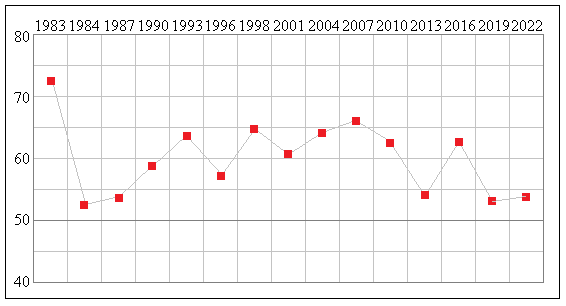
2022 results
Statistics and history
Announced candidates:
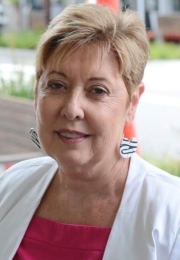 |
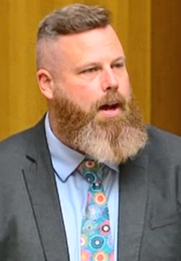 |
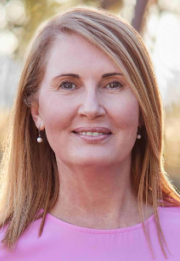 |
Sue Gilroy
The Nationals |
Dan Repacholi
Aust Labor Party |
Louise Stokes
Aust Greens |
Stuart Bonds (One Nation)
Paul Farrelly (Family First)
Suella Wrightson (independent)
Division of Hunter
Hunter has existed since Federation, and has always occupied most of the Hunter Valley upstream from Newcastle. Before 1949 its
largest centre was usually Maitland, since then it has been dominated by Cessnock and the small mining communities around it,
although it has usually included at least some of the farming and wine-growing towns of the Upper Hunter as well. From 1993
Maitland was split between Hunter and
Paterson, and the 2016
redistrubution removed Maitland altogether from the seat. Hunter has a fairly high median family income for a regional seat,
reflecting high wages in the mining industry, but a very low proportion of people born in non English speaking countries and of
people in professional occupations. Hunter is one of the least multi-cultural of Labor-held seats.
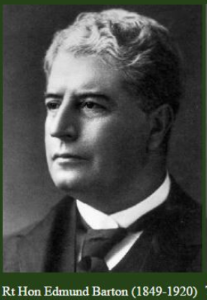 The 2016 redistribution abolished the adjoining seat of
Charlton, causing Hunter to be
moved sharply to the south, taking in the Lake Macquarie towns such as Morriset and Toronto, while shedding rural areas in the
north around Merriwa and Scone. This increased the Labor majority and appeared to render the seat reasonably safe.
The 2016 redistribution abolished the adjoining seat of
Charlton, causing Hunter to be
moved sharply to the south, taking in the Lake Macquarie towns such as Morriset and Toronto, while shedding rural areas in the
north around Merriwa and Scone. This increased the Labor majority and appeared to render the seat reasonably safe.
Hunter's first and most distinguished member was the first Prime Minister of Australia,
Sir Edmund Barton, who was elected unopposed in 1901. Not longer after his
departure, however, Labor began to contest the seat, and it has been held continously by Labor since 1910. Two Federal Labor Leaders
have held Hunter:
Matthew Charlton from 1910 to 1928 and
Dr H V Evatt from 1958 to 1960, at the end of his career: Hunter and Kooyong
are the only seats to have been held by three party leaders.
Joel Fitzgibbon succeeded his father,
Eric Fitzgibbon, in 1996. He was Minister for Defence 2007 to 2009, when
he became the first ministerial casualty of the Rudd Government. After Kevin Rudd's
demise in 2010 he became the chief organiser of his return in 2013. His reward was to be Minister for Agriculture, Fisheries and
Forestry for the last two months of the Labor government.
At the 2019 election the Nationals gained a 9.5% swing, greatly aided by a strong vote (21.6%) for One Nation. Labor would have lost
the seat on the pre-2016 boundaries. This result was a reaction by regional voters to Labor's policies on climate change and energy.
The shock of nearly losing a seat which Labor had held for 109 years led Fitzgibbon to become a critic of Labor's approach to climate
issues, and to his resignation from the front bench. When Fitzgibbon announced his retirement, Labor by-passed the usual preselection
process to endorse his chosen successor.
Dan Repacholi, Labor MP for Hunter since 2022, is a former miner and
Olympic shooter. He ran a small engineering business with 60 employees before his election. He is a strong supporter of the mining
industry. At the 2022 election he gained a small swing back to Labor. The 2024 redistribution has removed some rural areas around
Muswellbrook and added the Labor stronghold of Kurri Kurri, strengthening Labor's position. The Nationals candidate is Sue Gilroy, a
nurse.
Back to main page
| |
